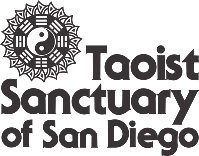Uses of Tuina
Tuina is an Asian Bodywork Therapy that has been used in China for 2,000 years. Tuina uses oscillating and pressure techniques to increase the circulation of Qi and Blood in order to promote healing and relieve pain. Passive joint movements are also used to restore complete function to muscles and joints. The goal in every session is to balance the flow of Qi energy through the meridians and to harmonize the circulation of Blood through the vessels. Pressure varies from light to heavy and the rate of application from slow to quick.
In a typical session, the client, wearing loose clothing and no shoes, lies on a table or floor mat. The practitioner examines the specific problems of the client and begins to apply a specific treatment protocol. The major focus of application is upon specific pain sites, acupressure points, energy meridians and muscles and joints. Advanced Tuina practitioners may also use Chinese herbal preparations to facilitate quicker healing. Sessions last from 30 minutes to 1 hour. Depending on the specific problems of the client, they may return for additional treatments. The client usually feels relaxed but energized by the treatment.
Tuina is especially useful for treating specific problems associated with the musculo-skeletal and nervous systems especially following injuries. It is not used very often as a simple relaxing massage.
Tuina practitioners can be found by calling acupuncture colleges or the American Organization for Body Therapies of Asia.
History
Tuina dates back to the Shang dynasty of China 1700 B.C.E. Oracle bones show that massage was used to treat children’s diseases and digestive complaints in adults. By 600 C.E. Tuina was included in the Imperial Medical College as a seperate department. Tuina flourished throughout China until the Qing Dynasty where it was suppressed along with other Chinese cultural arts. Following the Communist revolution, Tuina was restored along with other traditional medical arts and was included in the creation of the current system of Traditional Medicine Colleges.
Benefits, Limitations, Contraindications
Tuina is especially well suited for the treatment of specific musculoskeletal disorders and chronic stress-related disorders of the digestive, respiratory and reproductive systems due to its widespread use and development within hospitals in China. Effective treatment protocols have been tested in a practical setting. Tuina is not especially useful for those seeking a mild, sedating relaxing massage since it tends to be more task focused than other types of bodywork. Contraindications are conditions involving fractures, phlebitis, infectious conditions, wounds, or lesions.
Tuina certification seminars are offered at the Taoist Sanctuary of San Diego in one day or summer intensive format. CEUs are available for seminars.
Read more
Energetics of Hand Techniques
Tuina for treatment of post surgical adhesions
Tuina for side effects of cancer treatment
